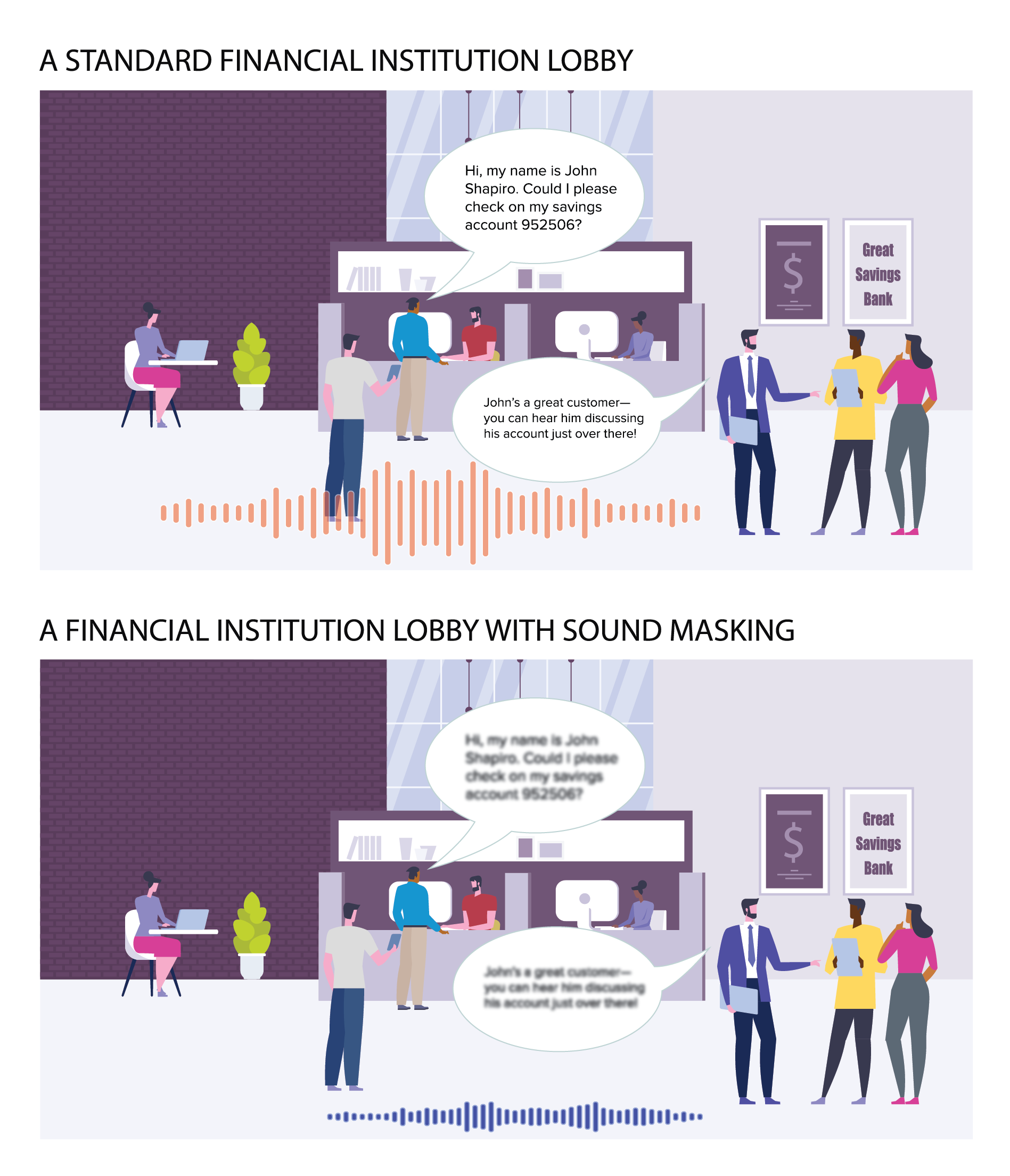From the Age of Information to our current Age of Innovation, information security remains an important topic for businesses and consumers alike. And while the conversation has largely shifted to online data, it is equally important to protect oral communication. Conversations at hospitals, hotels, and financial institutions all contain personal information that should stay private. Without the proper precautions in place, however, this data is available to anyone within earshot.
Financial institutions such as banks, credit unions, and investment services companies are legally bound to upholding information security for their clients on account of the Gramm-Leach-Bliley Act (GLBA). Enacted by the United States Congress in 1999, the GLBA requires institutions that provide financial services, products, or advice to safeguard their customer financial data.
Financial institutions are required to identify risks to the security of information, design and implement safeguards, and evaluate the effectiveness of those safeguards.
Unfortunately, existing structures are not conducive to privacy: cost-reducing measures have encouraged institutions to use space as efficiently as possible. These efforts have resulted in twice the number of workspaces in half the space. Additionally, modern open office plans meant to facilitate collaboration have brought down the height of cubicle walls and reduced the number of barriers between individual spaces.

While these innovations may work wonders for productivity at your business, they also allow for much greater sound transmission through the space, which is not ideal for information security. To stay in compliance with the law, financial institutions must think carefully about sound management solutions.
Just as the blurred text is more difficult to read, speech is less intelligible in a room with sound masking.
Acoustic Security Solutions
Effective acoustic design keeps sensitive information from leaving the workspace by absorbing sound waves, blocking their travel, or covering them with other sounds. Absorbing and blocking sound are passive measures that confine sounds so that they can’t be heard outside the workspace.
Sound-absorbing ceiling tiles, for example, prevent sound waves from bouncing outside the workspace, and cubicle walls and other barriers reflect sound waves back into the workspace. The combination of blocking and absorption can lessen sound from one cubicle from being heard in nearby cubicles.
These passive measures are only partially effective, however, and a more active approach is often required.
Sound masking is an active acoustic technology that effectively veils sound waves with other sound waves. The system emits sound at the frequency of the human voice, rendering conversations unintelligible for those not involved. In an open office environment, most conversations and noise can be easily heard from up to 50 feet away. With sound masking, individuals engaged in conversation can understand one another at normal volumes, but the radius of sound waves is decreased by approximately 70 percent.
White noise often comes up when discussing sound masking, and some even (incorrectly) use the terms interchangeably. Both technologies emit sound, yes, but white noise simply adds sound to the distracting office cacophony. In contrast, sound masking sends out engineered frequencies that decrease the overall sound in the space by containing sound to the area from which it originates.
Once you have an idea of your institution’s security challenges and the steps you can take to conquer them, it’s time to employ a sound management consultant to find the best solution for your space. Working together with a professional, you’ll be able to design an acoustic environment in which your employees can work without distraction and your customers can expect the highest levels of information security.
Learn more about our sound masking solution here, or find out how we can help by calling 1-888-287-4186 or emailing [email protected].






